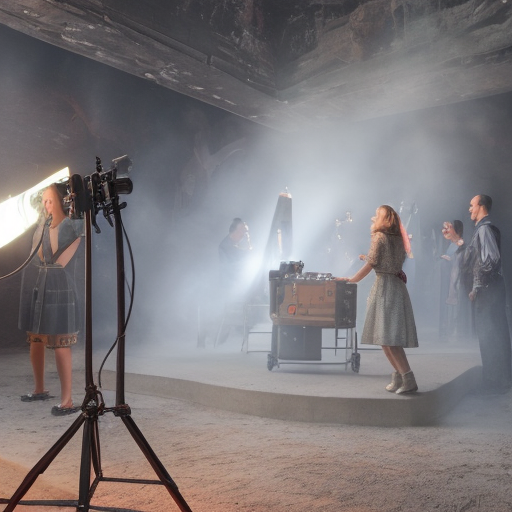Film Production: A Comprehensive Overview
Film production is a complex process that involves various stages and requires collaboration between different professionals. From the initial idea to the final product, each step is crucial in bringing a film to life. This summary provides a detailed overview of the film production process, including pre-production, production, and post-production.
Pre-Production
The pre-production phase is where the groundwork for the film is laid. It involves planning, organizing, and preparing for the actual production. Key activities during this stage include:
- Scriptwriting: The script is the foundation of any film. It outlines the story, characters, and dialogue. A well-written script is essential for a successful film.
- Storyboarding: Storyboarding involves creating a visual representation of each scene in the script. It helps the director and cinematographer plan the shots and visualize the film’s overall look.
- Casting: Casting involves selecting actors to play the characters in the film. Auditions are held, and the director chooses the most suitable actors for each role.
- Location scouting: Location scouts search for suitable filming locations based on the script’s requirements. They consider factors such as accessibility, aesthetics, and permits.
- Production design: Production designers work on creating the visual style of the film. They design sets, choose props, and collaborate with the art department to create the desired look and feel.
- Budgeting and scheduling: The producer and production manager create a budget and schedule for the film. This includes estimating costs, allocating resources, and setting deadlines.
Production
The production phase is where the actual filming takes place. It involves capturing the scenes and performances that will be edited together to create the final film. Key activities during this stage include:
- Directing: The director is responsible for overseeing the creative aspects of the film. They work closely with the actors, cinematographer, and other crew members to bring the script to life.
- Cinematography: The cinematographer, also known as the director of photography, is responsible for capturing the visual elements of the film. They make decisions about lighting, camera angles, and composition.
- Sound recording: The sound team records dialogue, ambient sounds, and other audio elements during filming. This includes using microphones, boom poles, and other equipment to capture high-quality sound.
- Art direction: The art department is responsible for creating the visual elements of the film. This includes designing and building sets, selecting props, and ensuring continuity in the film’s look.
- Costume and makeup: The costume and makeup departments work together to create the characters’ appearances. They design and create costumes, apply makeup, and style hair to match the director’s vision.
- Continuity: The continuity supervisor ensures that each shot matches the previous ones in terms of actors’ positions, props, and other visual elements. This is crucial for maintaining consistency in the final edit.
Post-Production
The post-production phase is where the filmed footage is edited, sound is mixed, and visual effects are added. Key activities during this stage include:
- Editing: The editor assembles the footage, selects the best takes, and arranges them in the desired order. They also add transitions, visual effects, and sound effects to enhance the storytelling.
- Sound design and mixing: The sound team works on enhancing the film’s audio. They add sound effects, mix dialogue and music, and ensure that the overall sound is balanced and of high quality.
- Visual effects: If the film requires visual effects, the post-production team creates and integrates them into the footage. This can include anything from simple enhancements to complex computer-generated imagery.
- Color grading: The colorist adjusts the color and tone of the footage to create a specific mood or look. This process can greatly impact the overall visual aesthetic of the film.
- Music composition: If the film requires an original score, a composer creates the music that complements and enhances the storytelling. The music is recorded and mixed with the rest of the film’s audio.
- Finalizing and distribution: Once the film is complete, it undergoes final quality checks and is prepared for distribution. This can involve creating different versions for theaters, television, or online platforms.
In conclusion, film production is a multi-faceted process that involves careful planning, collaboration, and creativity. From the initial idea to the final product, each stage plays a crucial role in bringing a film to life. Pre-production sets the groundwork, production captures the footage, and post-production adds the finishing touches. By understanding the different aspects of film production, one can gain a deeper appreciation for the art and craftsmanship behind every film.












